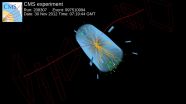(Press-News.org) PHOENIX, Ariz. -- May 13, 2015 -- A study led by the Translational Genomics Research Institute (TGen) has for the first time matched dozens of infantile diseases and syndromes involving muscle weakness and stiff joints to their likely genetic origins.
The study, in association with the University of British Columbia and BC Children's Hospital Vancouver, was published this month (May) in the American Journal of Medical Genetics. The study's goal is to better enable physicians and geneticists to advance new treatments that might help these children.
"It's amazing to us how diverse and complex the underlying genetics is for all of these diseases or syndromes," said Dr. Lisa Baumbach-Reardon, a TGen Associate Professor and the study's co-senior author. "A better understanding of disorders with contractures at birth and their associated genetics is critical for accurate diagnosis and optimal treatment."
The study describes over 50 of the more than 400 rare, but specific, disorders associated with multiple muscle contractures and stiff joints among newborns. They affect arms, legs, torsos and other parts of the body, often in combinations.
These more than 50 disorders are called "X-linked" syndromes, because the genes that cause them are on the X chromosome. Unaffected mothers can pass them on to their children, most often to their sons.
The study, or compilation of studies, identified 20 different genes associated with three categories of these more than 50 syndromes:
One category represented more than 20 syndromes in which the responsible X-linked genes have been identified.
A second category represented seven distinct reports consistent with X-linkage and present with contractures.
A third category represented an additional 20 syndromes with reported contractures that are suspected to be X-linked.
"Clearly, there are many different causes of stiff joints in newborns," said Dr. Judith Hall, Emerita Professor in the Departments of Pediatrics and Medical Genetics at the University of British Columbia and BC Children's Hospital, and the study's other co-senior author.
"We wanted to bring together the clinical description of each of these syndromes, and match them to genes, the biochemistry of genes, and the cellular pathways, in order to identify potential therapies," said Dr. Hall, one of the world's leading experts in describing birth defects.
This ontology -- or search of all medical literature -- is believed to be the most comprehensive ever undertaking for these diseases.
Dr. Jesse Hunter, a TGen Research Assistant Professor and the study's lead author, said understanding how to potentially intervene and prevent stiff joints during pregnancy are fundamental.
"Contractures can develop at any age as a result of neuromuscular dysfunction, or limitation of movement, but muscle innervation and movement in utero is particularly critical for normal joint development," Dr. Hunter said.
The study, Review of X-Linked Syndromes with Arthrogryposis or Early Contractures -- Aid to Diagnosis and Pathway Identification, concludes: "It is our hope that with advances in clinical evaluation, next generation sequencing, and bioinformatics tools, that these syndromes will (all) have identifiable molecular etiologies (causes) in the near future."
INFORMATION:
Major funding for this study was provided by TGen, the Muscular Dystrophy Association, and the Flinn Foundation, with additional funding from the TGen-Duke Biomedical Futures Program, the Helios Education Foundation, and the Freeport-McMoRan Copper & Gold Foundation.
About TGen
Translational Genomics Research Institute (TGen) is a Phoenix, Arizona-based non-profit organization dedicated to conducting groundbreaking research with life changing results. TGen is focused on helping patients with cancer, neurological disorders and diabetes, through cutting edge translational research (the process of rapidly moving research towards patient benefit). TGen physicians and scientists work to unravel the genetic components of both common and rare complex diseases in adults and children. Working with collaborators in the scientific and medical communities literally worldwide, TGen makes a substantial contribution to help our patients through efficiency and effectiveness of the translational process. For more information, visit: http://www.tgen.org.
Washington, D.C., May 13, 2015 -- Using efficiency principles borrowed from "lean" manufacturing processes, two Washington-area hospitals have gotten a life-saving drug to stroke patients significantly quicker, while also obtaining better diagnostic information using MRI. That's according to a new study published online ahead of print in the May 13 issue of Neurology®, the medical journal of the American Academy of Neurology.
National benchmarks call for getting stroke patients from the door of the emergency room to injection with the clot-busting drug known as ...
MISSOULA -- The amount of time and effort songbirds spend warming their eggs directly correlates to their own survival probability and that of their eggs, according to a study by University of Montana researchers that will appear in an upcoming issue of The American Naturalist.
The amount of care parents provide their young varies greatly across the animal kingdom, particularly among songbird species, who spend anywhere from 20 percent to nearly 100 percent of daylight hours warming eggs in their nests. A team of researchers led by Thomas Martin, senior scientist and ...
Cats may hold vital clues about the health benefits of vitamin D, a study suggests.
Researchers found that higher levels of vitamin D are linked to better survival chances for hospitalised pet cats.
Cats could prove useful for investigating the complex link between vitamin D and a range of health problems that also affect people, the researchers say.
The findings may also help vets to give owners better advice about their pets' prognosis, according to researchers at the University of Edinburgh's Royal (Dick) School of Veterinary Studies.
Researchers examined blood ...
Eighty percent of a population of Burmese long-tailed macaques on an island in southern Thailand use stone and shell tools to crack open seafood, and do so using 17 different action patterns, according to a study published May 13, 2015 in the open-access journal PLOS ONE by Amanda Tan from Nanyang Technological University, Singapore, and colleagues, under an 8 year field project led by Michael D Gumert, also from NTU.
The authors of the study explored variation in how Burmese long-tailed macaques used percussive stone and shell tools to hammer coastal foods on Piak Nam ...
Investigators at the Stanford University School of Medicine have identified a pattern of gene activity that could help scientists create a blood test for quickly and accurately detecting whether patients are experiencing a deadly immune-system panic attack.
Sepsis is a whole-body inflammation syndrome set off when the immune system wildly overreacts to the presence of infectious pathogens. It is the leading cause of hospital deaths in the United States, accounting for nearly half of the total number, and is tied to the early deaths of at least 750,000 Americans each year. ...
The potato leafhopper is a tiny insect--barely half the size of a grain of rice--with a bright lime green color that helps it blend in against plant leaves. Despite its unassuming appearance, this little pest causes big headaches for farmers across the eastern half of the United States. By feeding voraciously on many crops, including potatoes, green beans and alfalfa, the migratory potato leafhopper causes untold millions of dollars in damage every year.
Now, a study by entomologists at the University of Maryland and Queens College at the City University of New York ...
Alcohol drunk by a mouse in early pregnancy changes the way genes function in the brains of the offspring, shows the recent study conducted at the University of Helsinki. The early exposure was also later apparent in the brain structure of the adult offspring. The timing of the exposure corresponds to the human gestational weeks 3-6 in terms of fetal development.
In addition, the exposure to alcohol was found to cause similar changes to gene function in other tissues of the infant mice. These results suggest that alcohol causes permanent changes to gene regulation in ...
Two experiments at the Large Hadron Collider at the European Organization for Nuclear Research (CERN) in Geneva, Switzerland, have combined their results and observed a previously unseen subatomic process.
As published in the journal Nature this week, a joint analysis by the CMS and LHCb collaborations has established a new and extremely rare decay of the Bs particle (a heavy composite particle consisting of a bottom antiquark and a strange quark) into two muons. Theorists had predicted that this decay would only occur about four times out of a billion, and that is roughly ...
Benign prostatic hyperplasia (BPH) -- or, simply, prostate enlargement -- is one of the most common diseases of aging among men in the United States. In fact, by the time they hit 80 or above, upwards of 90 percent of all men in the U.S. experience some degree of prostate enlargement. And of those, 40 percent require medical treatment.
Despite the fact that the disease impacts so many people and carries with it a huge price tag -- estimated at tens of billions of dollars per year in medical expenses and lost wages, among other costs -- the factors that contribute to BPH ...
For the first time, satellite mapping of Latin America shows that the continent's agricultural expansion has waned in the wake of the global economic downturn, according to UBC research.
"Nearly every agricultural region across Latin America slowed down in expansion from 2007 to 2013, compared to the previous six years," says Jordan Graesser, the study's lead author. Graesser is a visiting international student at UBC's Liu Institute for Global Issues and the Institute for Resources, Environment and Sustainability.
The study, recently published in Environmental Research ...



